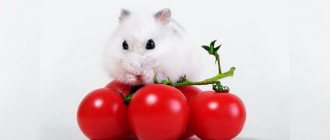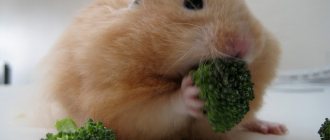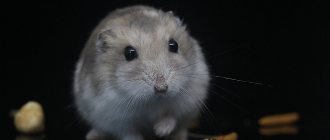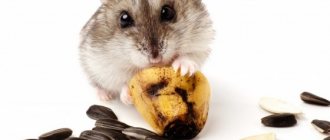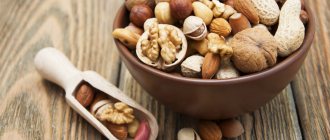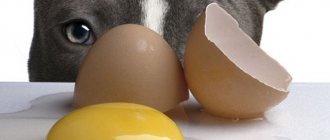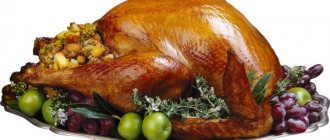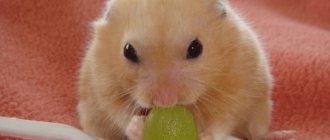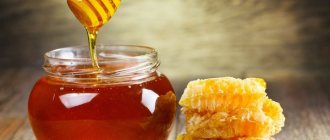What type of greens can be added to the food of Dzungarian and Syrian animals?
Fresh greens should certainly be present in the diet of pets. This especially applies to small rodents that do not have the opportunity to walk and obtain food independently.
Attention: veterinarians recommend supplementing the main diet of hamsters with an additional treat, which could well be dill.
It will be useful not only for ordinary hamsters, but also for Djungarian and even Syrian ones.
We have other articles on our website about which animals can and cannot be given dill, including whether parrots can.
Forbidden herb
Not all grass can be included in the hamsters' menu, even if it is quite edible to our taste. Some greens can cause allergic reactions, others irritate the stomach, and there are others that are poisonous to them.
- Sorrel contains too much oxalic acid, which irritates the mucous membranes and can cause allergies.
- Potato tops contain solanine, which is a strong poison for hamsters, so giving them to hamsters is strictly contraindicated.
- The leaves of tomatoes, eggplants, peppers and other nightshades also contain this dangerous glycoside, which can even be fatal.
- Onions and garlic can cause allergies, but most likely your pet will refuse such treats due to the pungent odor.
- Cabbage causes increased gas formation in the intestines, especially white cabbage, Brussels sprouts and red cabbage. Of all the types of cabbage, only broccoli and kohlrabi are recommended for hamsters. With caution, you can include Chinese cabbage and pak choi in your hamster’s diet, carefully monitoring how the little furry reacts to them.
- St. John's wort is a medicine for people, but for animals, especially small ones, it is very dangerous.
- Beet tops can cause diarrhea. You can give it a little at a time if there are no problems with stool.
- Mint and lemon balm contain essential oils and often lead to an allergic reaction, so they should not be given to hamsters even in small quantities.
- Tarragon is also an overly aromatic plant. You can give it only very rarely and carefully monitor how your furry pet reacts to it.
The list of plants that are poisonous to hamsters is very long. It includes wild, garden, and indoor plants. Therefore, under no circumstances should you give them a green leaf unless you are absolutely sure that it will not harm them.
Pine needles are strictly contraindicated for hamsters, as they cause severe allergies; juniper is especially dangerous.
Will any variety work?
You can experiment and grow different varieties of dill for your hamster. But if this is not possible, but you have a dacha or your own garden, then ordinary dill, which grows in almost every garden, is quite suitable for additional complementary feeding.
If the pet owner does not have a summer cottage, then such greens can be grown without problems at home, for example, on a windowsill, or periodically bought in supermarkets.
Where can I get grass for a rodent?
Greens for rodents can only be collected in summer cottages, as well as in park areas or forest areas. In addition, it is necessary to ensure that the grass is treated with chemicals such as pesticides. To neutralize possible additives, it is recommended to leave the greens in water for some time. The liquid will absorb substances harmful to the rodent, leaving only beneficial vitamins. In the summer, grass grows everywhere.
But before collecting, you need to consider a number of nuances:
- A small life hack: you can soak the greens in water for a couple of hours, and then give them to your hamster as needed. This method will help provide nutrients to your pet’s diet throughout the year.
- Herbs collected and prepared with your own hands can be chopped and dried. Drying should not be in the open sun, but in the shade. In addition, such grass can be mixed with animal feed.
- Some owners specifically grow grass on their windowsills. You can grow it either from seeds or using special grass left uneaten by the animal.
Juicy food contains a lot of water, which is beneficial for your pet. Young grass is considered especially useful. But, as mentioned above, not every grass is suitable for adequate nutrition of a rodent. In order not to make a mistake with your choice, you need to carefully study the prohibited and permitted varieties of herbs and, depending on this, formulate your diet.
Benefit
Chemical composition of the culture
Reference: dill contains 7 grams of carbohydrates per 100 grams of product, which is approximately 54% of the total energy from a serving or 28 kilocalories. It does not contain trans fats and cholesterol that are harmful to the body.
But vitamin A predominates, as well as:
- vitamins C, B1, B2, B3 (PP), B5, B6 and B9;
- folic acid;
- calcium;
- magnesium;
- sodium;
- iron;
- phosphorus;
- zinc;
- copper.
- It contains fiber, which is necessary to maintain the health of the rodent.
- Hamsters are quite often susceptible to various colds, so dill will effectively fight colds and boost the pet’s immune system.
- It will help with constipation in the animal, it acts as a laxative and promotes gentle bowel movements for the animal.
- It will also help in the prevention of cystitis and kidney disease.
- Due to a sedentary lifestyle, hamsters are often prone to obesity, so dill will help avoid unwanted excess weight, as it normalizes the metabolism of rodents.
- Dill is necessary for pregnant females, but not more than 30-50 grams per week.
- Greenery will also help recently swarming female hamsters recover. It improves lactation, enriches milk with vitamins, and supplies them to the bodies of growing babies.
Dill is a type of green that can be frozen without losing its beneficial properties. To ensure that your pet always has greens in his diet, dill can be prepared for future use, frozen in the refrigerator, and given to the rodent defrosted as needed, after washing and drying it.
Dried dill also does not lose its beneficial properties, and it can be given to pets in this form. Even dried dill stores a large supply of B vitamins, as well as A, C, E, K, PP.
What kind of grass can you give?
In order not to harm the hamster, you need to figure out what kind of grass can be offered to him as food, which one should be given with caution and in small quantities, and which one is strictly forbidden to feed this animal.
Find out more information about hamster nutrition.
Hamsters can be given:
- Greens grown in the garden: dill, parsley, lettuce, celery, carrot tops, spinach. This green is considered the safest for rodent nutrition.
- Weeds: young nettle, wheatgrass, dandelion leaves (in limited quantities).
- Forage crops: alfalfa, clover, sprouted wheat.
- Medicinal herbs: plantain, burdock, knotweed, knotweed.
- Leaves of fruit and berry crops and other trees: willow, birch, apple, cherry. Under no circumstances should you give hamsters bird cherry leaves, as they are poisonous to this rodent.
Video: what grass can hamsters eat?
All these plants have different taste qualities, as well as a different composition of nutrients. Most of the listed types of greens are suitable for a hamster's daily diet, but some types should be given to the pet only during periods of illness.
Garden greens
All breeds of hamsters enjoy garden greens. Preference should be given to crops grown in the garden without the use of pesticides.
As an additive to a rodent's diet, you can use:
- Lettuce leaves. This plant is the favorite among domestic rodents; it has a neutral, mild taste and a rich vitamin composition. It contains virtually no proteins or carbohydrates, which means that salad should not be the basis of a herbal diet.
- Carrot tops. Contains ascorbic acid, calcium. Offered to hamsters to prevent diabetes, problems with the cardiovascular system and to strengthen bones.
- Dill and parsley. An important source of vitamins and minerals. Helps prevent cataracts, dental problems, and helps strengthen the immune system. However, during pregnancy, parsley should be excluded from the diet of females.
- Lawn grass of the bluegrass family. It contains healthy fiber, as well as some vitamins and minerals. This grass is given if it is young and does not grow near roads.
- Celery. You should not offer it to your pet often; once a week will be enough. Useful due to the content of magnesium, phosphorus, sodium, as well as B vitamins.
- Spinach. Leader in the content of microelements, minerals and vitamins. It should be given with caution as it may cause digestive problems.
We advise you to find out whether you can feed your hamster banana.
Weeds
Weeds are one of the most natural forms of food for hamsters in the wild.
At home, you can offer your rodent the following types:
- Nettle. Only young leaves and shoots should be given. Contains iodine, which is rarely found in other plants. In spring, nettle is one of the first to appear and is an excellent prevention of vitamin deficiency in rodents. Before giving the leaves to your hamster, they should be washed and boiled for several minutes in boiling water, then cooled and cut.
- Wheatgrass. This green is considered antitumor and immunomodulatory. Wheatgrass is a natural food source for a rodent's diet. It is part of hay, which is sold in specialized stores for feeding pets. Ideal also fresh.
- Dandelion. The leaves of this plant are used to feed pets. Suitable for the prevention of eye diseases, hair and skin problems. Also stimulates appetite. It is necessary to give in small quantities, since it is a very strong choleretic plant and also has a pronounced bitter taste.
Feed
Forage plants such as alfalfa, clover, wheat, and oats are considered optimal for feeding hamsters. Alfalfa and clover are very rich in protein, healthy and nutritious. Alfalfa leaves and fruits contain mineral elements such as fluorine, potassium, calcium, as well as essential oils, saponins, enzymes, carotene, proteins, carbohydrates and fatty acids. Clover contains fiber, amino acids, vitamins, minerals and many other useful substances.
Did you know? In 1974, a record-breaking female gave birth to 26 hamsters in the USA. This is more than 3 times the average litter size.
You can give your pet a little of this plant every day. If you plan to give your rodent wheat and oats, then you need to take into account that these plants should not be ripening, they should be in the form of young soft seedlings. These crops are rich in selenium, phosphorus, and B vitamins. The convenient thing is that the seedlings of these plants can be easily grown at home during the cold season.
Dried grass
In order for your pet rodent to receive beneficial substances from greens in winter, they should be dried in summer.
The correct way to do this is as follows:
- Choose those plants that are allowed to be given to hamsters.
- Pick up plants outside the city, away from roads and factories.
- Rinse the greens well under running water.
- Find a suitable place for drying herbs in your apartment, for example, on a windowsill. A prerequisite is shade.
- Leave to dry for about a week.
- Collect in containers in which they will be stored.
You might be interested to know if you can give your hamster cabbage.
In this way, you can dry tree leaves (birch, apple, serviceberry), herbs and flowers (dandelion leaves, chamomile, clover, rose hips, wheatgrass, knotweed). In the summer, you can also take care to provide your pet with some garden herbs: parsley, dill, spinach, carrot tops.
These plants are also sold in winter, however, the quality of the greenery may be low and harm the health of the hamster.
Medicinal plants
Hamsters eat some medicinal plants in their natural habitat without restrictions. However, these plants should not be given to a domestic rodent as the main green diet, only as a supplement to more neutral ones.
Medicinal herbs are considered:
- Plantain has antimicrobial properties. Suitable if the hamster has small wounds in the mouth.
- Burdock has a strengthening effect on the rodent's immunity. This plant can also prevent cystitis, various skin diseases, and also helps get rid of parasites.
- Dwarf contains many vitamins and is also a source of natural antibiotics. Has anti-cancer properties. It is also able to prevent joint diseases and support the animal’s body during illness.
- Knotweed is used as a diuretic and anti-inflammatory plant.
- Rosehip petals have general strengthening and wound-healing properties.
Find out if hamsters can eat a pear.
The following plants should be given more carefully for medicinal purposes:
- Tarragon is used to heal wounds, relieve spasms and treat inflammation. However, the plant contains many essential oils, so you should be extremely careful with it and give it in strictly dosed doses.
- Wormwood is known as a sleeping pill, diuretic and anti-inflammatory plant. This herb helps improve the functioning of the hamster's digestive system. It is strictly forbidden to introduce it into the animal’s diet on your own; this should only be done on the recommendation of a veterinarian. Wormwood also repels fleas on a hamster; for this purpose it can be placed near the cage.
How to give correctly?
Hamsters need to be pampered with fresh herbs not only in the summer. Green treats should be available in your pet's feeder all year round. In summer and autumn, the rodent’s body should receive up to 300 grams of fresh greens per day. A young individual will need 100 grams, but older rodents will need twice as much.
The main thing to remember is that there should be moderation in everything, and you should treat your pet with dill no more than two or three times a week, then he will be healthy, cheerful and full of energy.
If the animal happily eats various greens, then you can include in its diet not only dill, but also other healthy foods - parsley, fresh lettuce or spinach. But it is not recommended to give sorrel, green onions, mint and basil to rodents, since these greens contain harmful elements for the animals’ bodies.
If you find an error, please select a piece of text and press Ctrl+Enter.
Hamster diet
Plant food is the basis of the diet of any rodent. Syrian, Dzungarian and other popular domestic breeds only need to eat it so that the body receives all the elements necessary for its healthy functioning.
- The building materials are carbohydrates and proteins.
- Vitamins A and C, which increase the body's resistance to disease and improve the overall tone of the body.
- A storehouse of elements such as calcium, magnesium, zinc, iron, copper.
- Source of dietary fiber for the gastrointestinal tract.
- Medicine and prevention for certain diseases such as oncology, problems with the gastrointestinal tract, and colds.
Also, the rodent, in addition to eating, uses fresh and dry greens to build nests and cozy rookeries. This instinct was passed on to them from their wild relatives. This means that greens should always be present in your pets’ cage, and it must be given regularly. But it is important what kind of grass hamsters eat because not all of them can benefit them.
Composition of dill
Like parsley, dill is cultivated in many countries and overlaps with the habitat of hamsters in the wild. Therefore, wild hamsters often eat these greens.
Dill is rich in folic acid and vitamin C. There is some amount of vitamin A, B₃, B₅ and E. There is a lot of calcium and potassium, phosphorus, magnesium and iron.
It helps normalize digestion, speeds up metabolism, and can also be used as a dietary supplement during obesity.
Can hamsters have parsley and dill?
With the arrival of summer, more seasonal products appear on our table: different varieties of berries, fresh home-grown vegetables, juicy greens straight from the garden. All of them contain a huge amount of useful substances and microelements. When we consume summer gifts for food, we often think about treating our pets to them. Hamsters, like other rodents, benefit from greens. Therefore, let’s consider whether hamsters can have parsley and dill, and how to serve them correctly.
Can hamsters have parsley and dill?
It is believed that domestic hamsters are completely unpretentious eaters.
However, rodent nutrition has its own peculiarities. His diet should be balanced and formulated so that it contains proteins, carbohydrates, vitamins, and minerals. Proper nutrition will prevent the occurrence of diseases in your pet, which will significantly affect its life expectancy. The basis of the diet is considered to be a ready-made dry mixture. But succulent foods are also of great importance, as they are a source of vitamins and minerals. Be sure to include fresh greens in your rodent's diet. Can hamsters have parsley and dill? You will learn about this from this article.
Is it possible to give a hamster dandelion roots and flowers?
Regarding dandelion leaves, experts and hobbyists agree that they can and are beneficial to feed to rodents. Can hamsters eat the underground part of the plant? A popular manufacturer of products and food for rodents (Little One) is sure that it is possible. The brand produces a special treat for rodents of all types - dried dandelion root. This product helps animals grind down their rapidly growing incisors, but most importantly, it is a source of minerals and inulin.
Inulin is a unique polysaccharide that normalizes intestinal microflora and promotes healthy digestion. This substance helps treat and prevent diabetes in hamsters (unfortunately, animals are susceptible to this disease).
You can collect and prepare such a medicinal delicacy yourself. The rhizome is thoroughly cleaned of soil (the top layer is scraped off with a knife). Dry either in the open air and sun for 2 weeks, or in a dryer at a temperature not exceeding 45 C.
There is no information on whether hamsters can eat dandelion flowers. Theoretically, the yellow inflorescences are edible, but the stem, filled with bitter milk, should not be given. Flowers are not fed to rodents for fear of pollen allergies. There is no point in experimenting - the leaves of the plant, although low in calories, are very useful. There will be enough of them to diversify the hamka’s menu.
How to give grass to a rodent?
It is important to understand that field and garden herbs do not replace adequate nutrition for a rodent. Therefore, it would be more logical to combine herbs with food, vegetables and fruits.
On the advice of experienced breeders, you need to pay attention to a number of the following details:
- If you thoroughly rinse the greens with plain water, you can promptly remove harmful substances from the plant, as well as possible chemicals that may be toxic to your pet.
- Young grass is best suited for a rodent's diet. Later varieties may cause problems with the gastrointestinal tract due to sharper particles that are not digested by the body.
- A variety of your pet’s diet is the key to its excellent health. It is recommended to remove low-quality and withered blades of grass before serving.
- You should not give limp grass, so it is better to remove it in a timely manner. If the owner initially overlooked this point, the hamster may put the grass aside for later, it will begin to rot, and the pet will become poisoned.
If there are children in the family, you should not allow your pet to feed unhealthy foods like mint or cabbage. You can conduct an introductory conversation with the child, explaining to him what can be given to the pet and what should be avoided. This will develop the baby and help keep the hamster out of trouble.
Prohibited plants
In addition to healthy greens, there are herbs that fluffies should not eat. Everyone knows that sorrel is very tasty and rich in vitamins, but small rodents should absolutely not eat it. It is too acidic and can corrode the mucous membrane of the digestive tract or cause allergies.
Prohibited herbaceous plants also include:
- potato tops (and sprouts). Not recommended due to the high content of the alkaloid solanine, which is poisonous to hamsters;
- white cabbage. Weakens the hamster's delicate stomach, causing diarrhea;
- garlic and onion feathers contain strong-smelling essential oils that provoke allergies. The hamster himself will not eat them because of the sharp bitter taste;
- mint and lemon balm are also strong allergens.
It is strictly forbidden for domestic rodents to collect grass from the street, because it is covered with a layer of dust, soot and heavy metals, poisonous to furry babies.
How to stock up on greens?
It is best to cut grass for fluffy at your own dacha or in natural conditions (meadow, field). It is necessary to ensure that the gathering place is away from large populated areas, busy highways and businesses.
In summer, problems with greenery usually do not arise; there is a lot of it everywhere. In winter, it is difficult to find healthy herbs: they are expensive in stores, and it is not known what pesticides and nitrates they contain. Therefore, plants can be frozen or dried in the shade and stored in jars. Frozen weed retains more nutrients when thawed in the refrigerator.
By the way, in winter you can grow fresh grass right on your windowsill! To do this, you will need a long box, soil or sawdust, and lawn seeds.
